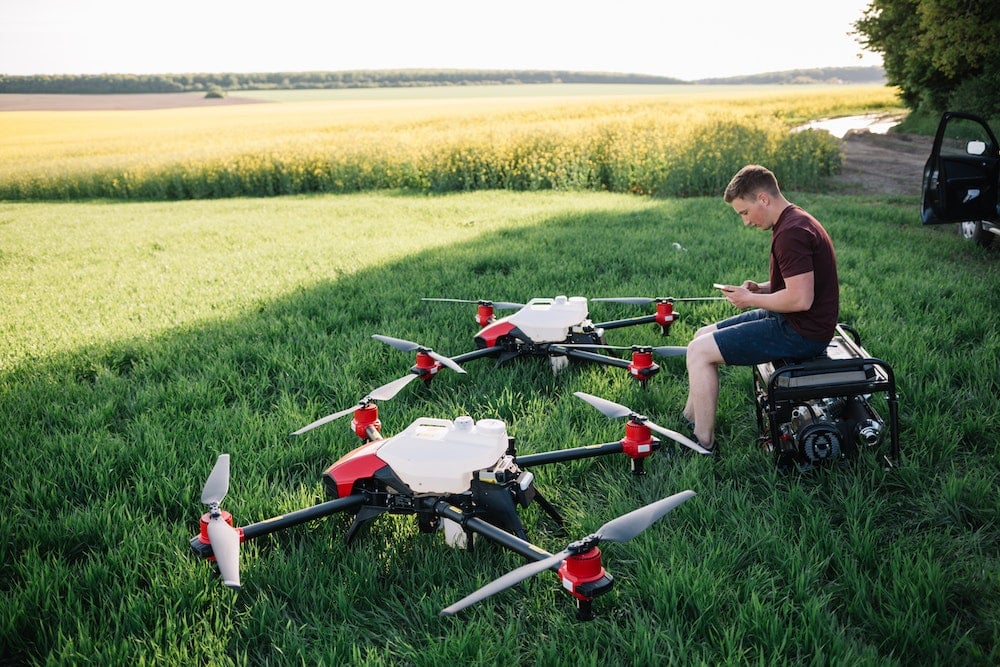What Precision Agriculture Technologies Can UK Farmers Use to Enhance Crop Yields?

As we find ourselves in the modern era of the 21st century, farmers in the United Kingdom are increasingly witnessing the transformative power of technology in farming. Precision agriculture (PA) technology has become a game changer, revolutionising traditional farming methods to enhance productivity and crop yields. This leap forward in agricultural management is based on the strategic utilisation of data, optimising resources, and improving decision-making processes.
The Concept of Precision Agriculture
Precision agriculture refers to the use of technology and data in farming to maximise productivity and profitability while minimising waste and environmental impact. This approach is fundamentally different from traditional farming practices as it focuses on managing farms with an unprecedented level of detail. By using various technologies like GPS, sensors, and systems for data analysis, farmers can monitor every square metre of their field and make informed decisions about when, where, and how much water, fertiliser, or pesticide to apply.
Cela peut vous intéresser : What Advanced Techniques Can UK Dental Practices Use to Improve Patient Experience?
Precision agriculture is about taking control of your farming operations. It's about knowing your soil and crop conditions down to the smallest detail. And it's about using that knowledge to make smarter decisions that will lead to better outcomes for your farm.
Precision Agriculture Technologies and Their Uses
There are a variety of precision agriculture technologies currently on the market. Each of these technologies has a unique role in helping farmers manage their farm more efficiently and productively.
Avez-vous vu cela : Driving energy innovation with vallourec smart tubular solutions
-
Satellite Navigation Systems (GPS): This technology allows farmers to map their fields accurately, track equipment in real time, and guide machinery on pre-planned routes. This significantly reduces overlaps and gaps when sowing seeds, spraying pesticides, or harvesting, saving both time and resources.
-
Remote Sensing Technology: This includes the use of drones, satellites, or aircraft to capture detailed images of fields. These images can reveal crop health, soil moisture levels, and the presence of pests or diseases, enabling farmers to take action before it's too late.
-
Yield Monitors: These devices, typically attached to harvesters, record the quantity of crop harvested at different locations within the field. This data can be used to create yield maps, helping farmers identify high and low productivity areas and adjust their strategies accordingly.
-
Variable Rate Technology (VRT): VRT allows for the precise application of inputs like water, fertiliser, and pesticides based on the specific needs of different areas within a field. This reduces waste and ensures that every part of the field receives exactly what it needs.
The Role of Data in Precision Agriculture
Possibly the most significant aspect of precision agriculture is the role of data. The technologies mentioned above produce vast amounts of data about fields, crops, and farming operations. This data, when analysed and interpreted using sophisticated software systems, can provide farmers with invaluable insights into their farms.
For example, soil sensor data can give detailed information about soil conditions such as moisture levels, temperature, pH, and nutrient content. This can help farmers understand their soil better and manage it more effectively. Similarly, yield monitor data can reveal patterns and trends in crop productivity, guiding future crop management strategies.
Data can also enhance the timeliness of agricultural tasks. For instance, remote sensing data can alert farmers about emerging pest or disease outbreaks, allowing them to respond quickly and minimise crop losses.
The Challenges and Potential Solutions
While precision agriculture offers numerous benefits, it is not without its challenges. One significant issue is the cost of technologies. High-tech farming equipment and software systems can be expensive, and this can be a deterrent for many farmers.
However, potential solutions are emerging. One approach is to provide farmers with access to precision agriculture services, rather than requiring them to purchase and maintain their own equipment. This could drastically reduce the financial burden on farmers, making precision agriculture more accessible and widespread.
Another challenge is the need for technical skills to operate and maintain precision agriculture technologies and interpret the data they produce. To address this, agricultural technology companies and educational institutions are offering training and support services, helping farmers get the most out of their investment in precision agriculture.
Although precision agriculture is still evolving, its potential to revolutionise farming is clear. As awareness grows and more solutions to the challenges are found, it is likely that an increasing number of UK farmers will embrace this smart farming approach, leading to enhanced crop yields and a more sustainable future for UK agriculture.
Machine Learning and Big Data in Precision Agriculture
We are now in an era where machine learning and big data have begun to play a crucial role in the evolution of precision agriculture. The automated analysis of large and complex data sets using machine learning algorithms can reveal patterns and trends that would otherwise remain undiscovered, opening up new possibilities for farming practices.
Machine learning can interpret and analyse the vast amount of data generated by precision agriculture technologies, such as GPS, remote sensing, and yield monitors. By analysing this data, machine learning can provide actionable insights on various aspects, such as soil moisture levels, nutrient content and environmental factors influencing crop yield. These insights can drive decision-making processes, enabling farmers to optimise their farming operations in real time.
For instance, machine learning algorithms can predict crop yields based on patterns found in historical data, helping farmers to plan their harvests more effectively. Similarly, these algorithms can identify potential pest outbreaks or disease risks before they become significant issues, allowing farmers to take preventative action.
In essence, machine learning and big data are unlocking the full potential of precision farming, enabling farmers to leverage their data in ways never before possible. The integration of these technologies with traditional farming techniques is paving the way for a new era of agriculture that is smarter, more efficient, and more sustainable.
The Future of Precision Agriculture in the United Kingdom
As we look towards the future, there is no doubt that precision agriculture has the potential to transform the farming market in the United Kingdom. The increasing adoption of these cutting-edge technologies by farmers is not only enhancing crop yields but is also promoting more sustainable farming practices, reducing the environmental impact of agriculture.
The market size for precision agriculture in the UK is expected to grow significantly in the coming years, driven by the numerous benefits it offers. As precision farming becomes more accessible and affordable, and as farmers become more comfortable with the technology, we can expect to see an increasing number of farms in the UK adopting this approach.
However, it is crucial that the industry continues to innovate and evolve, finding new ways to overcome the challenges that precision agriculture currently faces. This will involve ongoing research and development, as well as increased collaboration between farmers, technology companies, and educational institutions.
In conclusion, the future of precision agriculture in the United Kingdom looks promising. It represents a new way of farming that can deliver enhanced crop yields, greater efficiency, and reduced environmental impact. As the industry continues to evolve, we can look forward to a future where smart farming techniques are the norm rather than the exception, leading to a more sustainable and productive agricultural sector.
